Hexagonal Pyramid - Definition, Examples, Quiz, FAQ, Trivia
Learn about 3D geometry with hexagonal pyramids: properties, volume, surface area, and examples
What is a Hexagonal Pyramid?
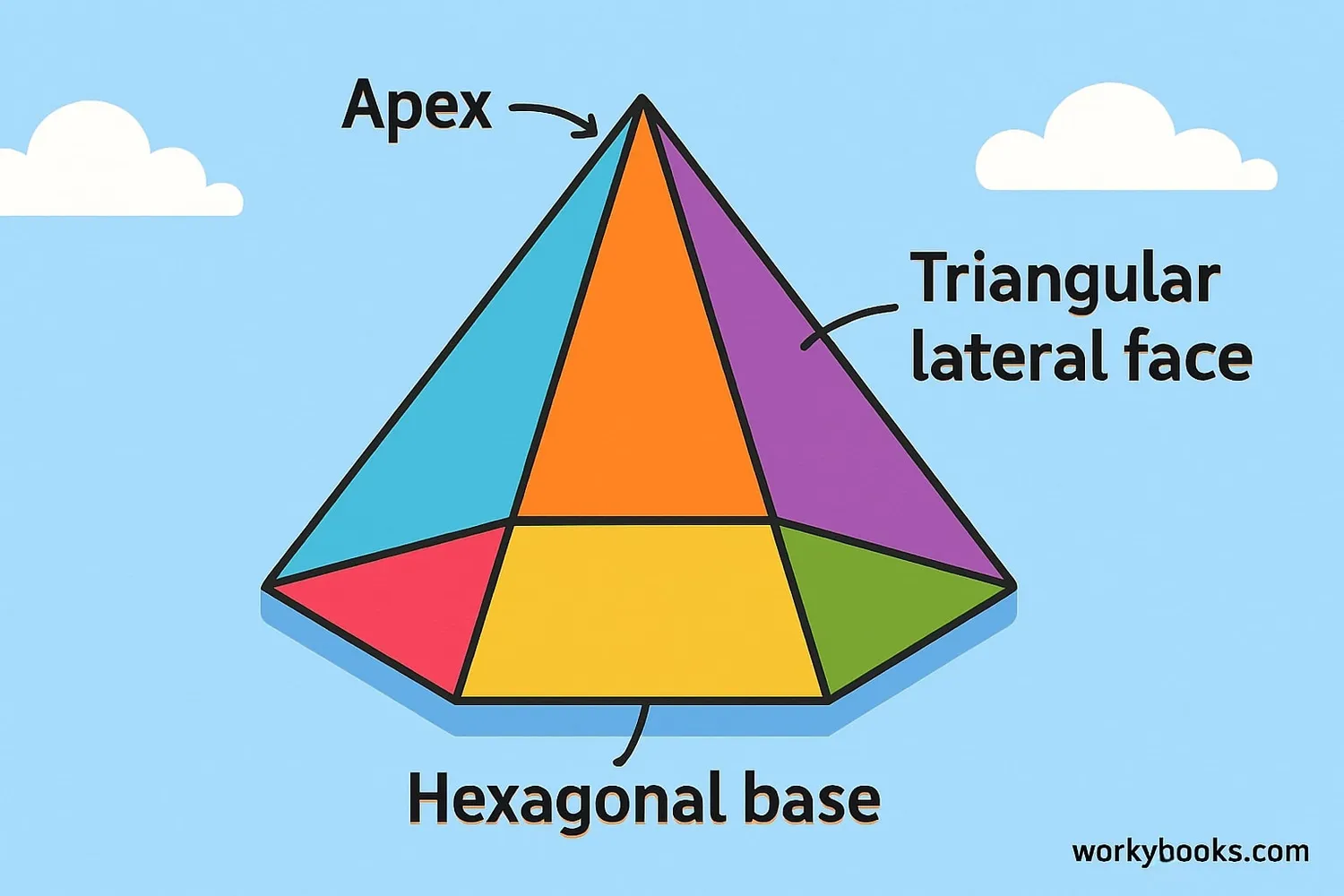
A hexagonal pyramid is a three-dimensional geometric shape that has a hexagon (a six-sided polygon) as its base and six triangular faces that meet at a single point called the apex or vertex.
Think of it like an Egyptian pyramid, but instead of a square base, it has a six-sided base. The hexagonal pyramid is a type of heptahedron, which means it has seven faces total: one hexagonal base and six triangular lateral faces.
Hexagonal pyramids are all around us in architecture, packaging, and even in nature. Understanding this shape helps us recognize geometric patterns in our world.
Key Concept
A hexagonal pyramid has 7 faces, 12 edges, and 7 vertices. It's called a heptahedron because "hepta" means seven in Greek.
Properties of a Hexagonal Pyramid
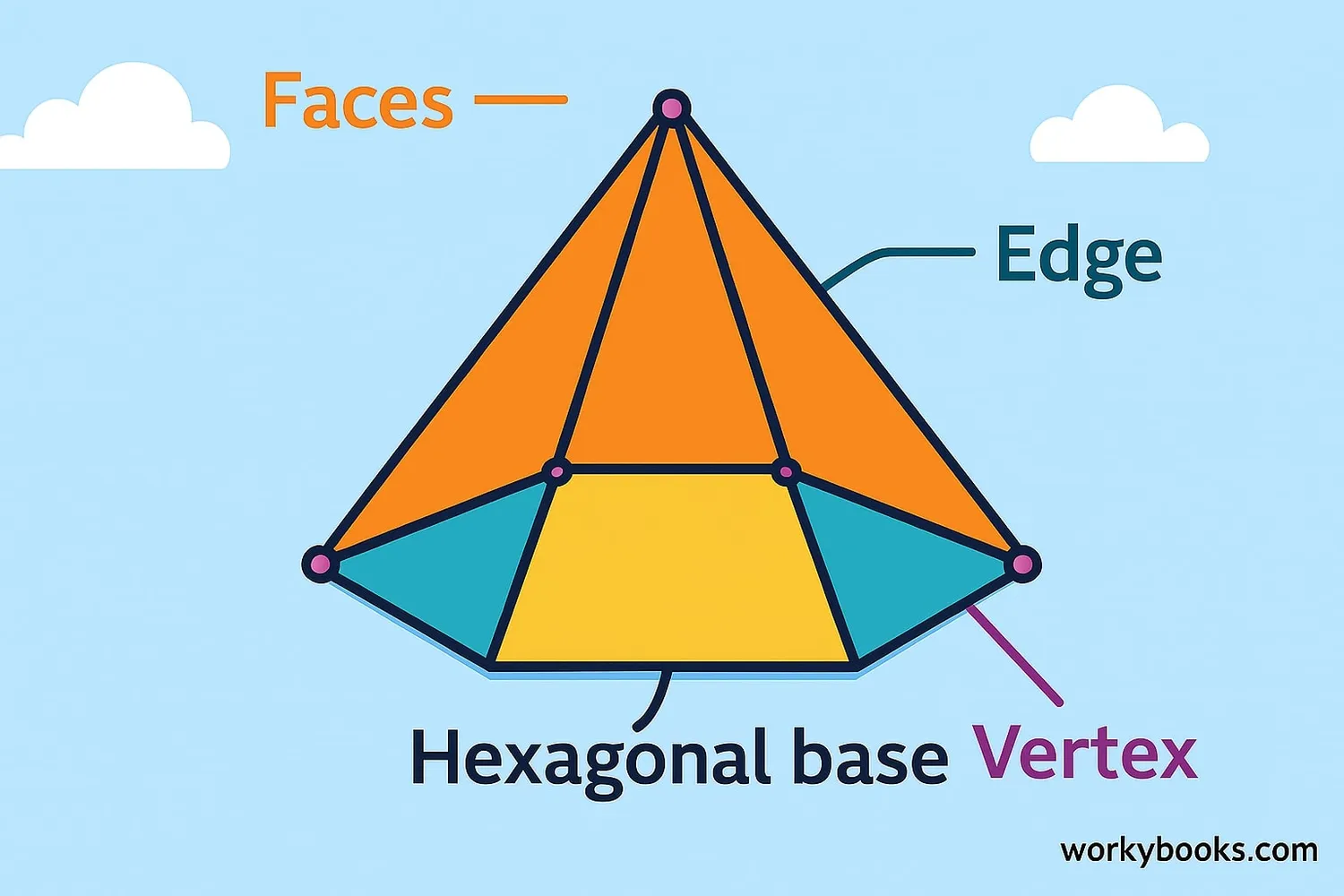
Every hexagonal pyramid has specific properties that make it unique:
- Faces: 7 faces total (1 hexagonal base + 6 triangular lateral faces)
- Edges: 12 edges (6 edges of the hexagon + 6 edges from the base to the apex)
- Vertices: 7 vertices (6 vertices of the hexagon + 1 apex)
- Base: Always a regular hexagon (all sides and angles equal)
- Lateral Faces: Six isosceles triangles (two equal sides)
- Apex: The point where all triangular faces meet
- Height: The perpendicular distance from the base to the apex
- Slant Height: The height of each triangular face
Remember
If all the triangular faces are equilateral triangles (all sides equal), then it's called an equilateral hexagonal pyramid.
Volume of a Hexagonal Pyramid
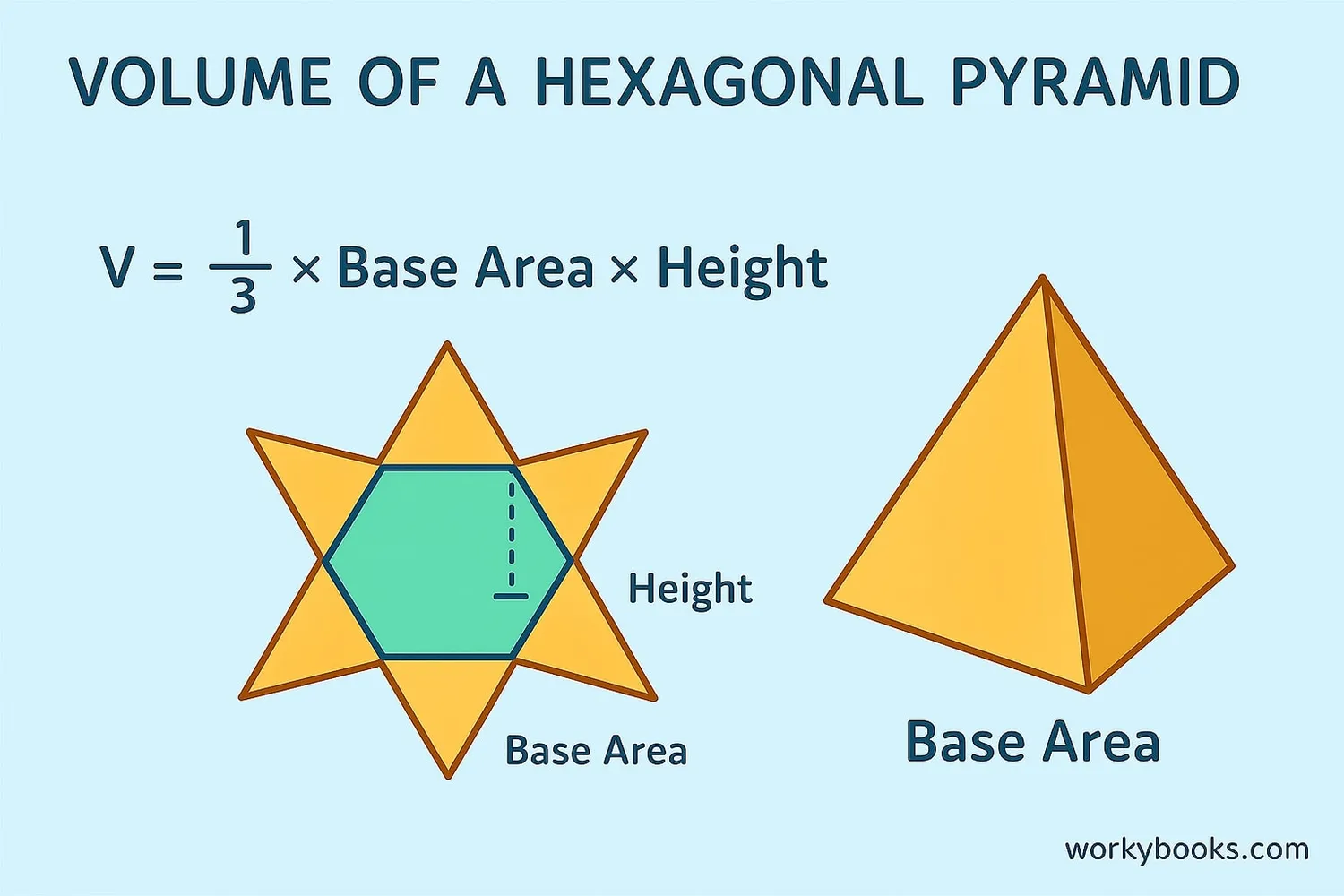
The volume of a hexagonal pyramid tells us how much space it occupies. To calculate it, we use this formula:
Volume Formula
Where Base Area is the area of the hexagonal base, and Height is the perpendicular distance from base to apex.
Since the base is a regular hexagon, we can calculate its area using:
Base Area = (3√3/2) × side²
So the complete formula becomes:
V = (1/3) × (3√3/2 × side²) × height = (√3/2) × side² × height
Let's try an example: If a hexagonal pyramid has a base side length of 4 cm and a height of 9 cm, what is its volume?
Step 1: Calculate base area = (3√3/2) × 4² = (3√3/2) × 16 = 24√3 cm² ≈ 41.57 cm²
Step 2: Calculate volume = (1/3) × 41.57 × 9 ≈ 124.71 cm³
Remember
Volume is always measured in cubic units (like cm³, m³, in³) because it represents three-dimensional space.
Surface Area of a Hexagonal Pyramid
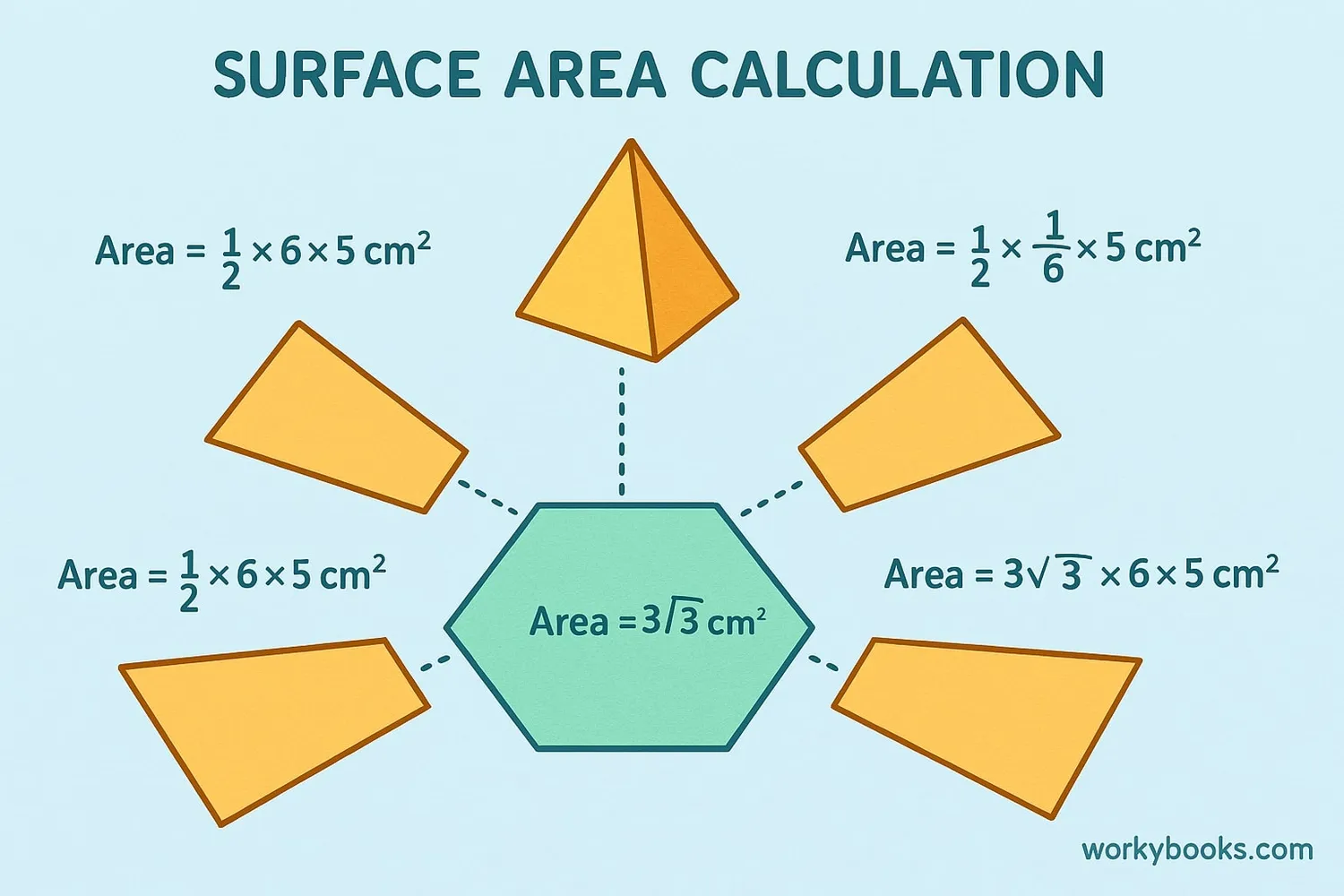
The surface area of a hexagonal pyramid is the total area of all its faces. We calculate it by adding the area of the base to the area of all triangular lateral faces.
Surface Area Formula
Where Lateral Area is the sum of areas of all six triangular faces.
For a regular hexagonal pyramid:
Base Area = (3√3/2) × side²
Lateral Area = 6 × (1/2 × base side × slant height) = 3 × side × slant height
So the complete formula becomes:
SA = (3√3/2 × side²) + (3 × side × slant height)
Let's try an example: If a hexagonal pyramid has a base side length of 5 cm and a slant height of 8 cm, what is its surface area?
Step 1: Calculate base area = (3√3/2) × 5² = (3√3/2) × 25 ≈ 64.95 cm²
Step 2: Calculate lateral area = 3 × 5 × 8 = 120 cm²
Step 3: Calculate total surface area = 64.95 + 120 = 184.95 cm²
Remember
Surface area is always measured in square units (like cm², m², in²) because it represents the total covering of the shape.
Net of a Hexagonal Pyramid
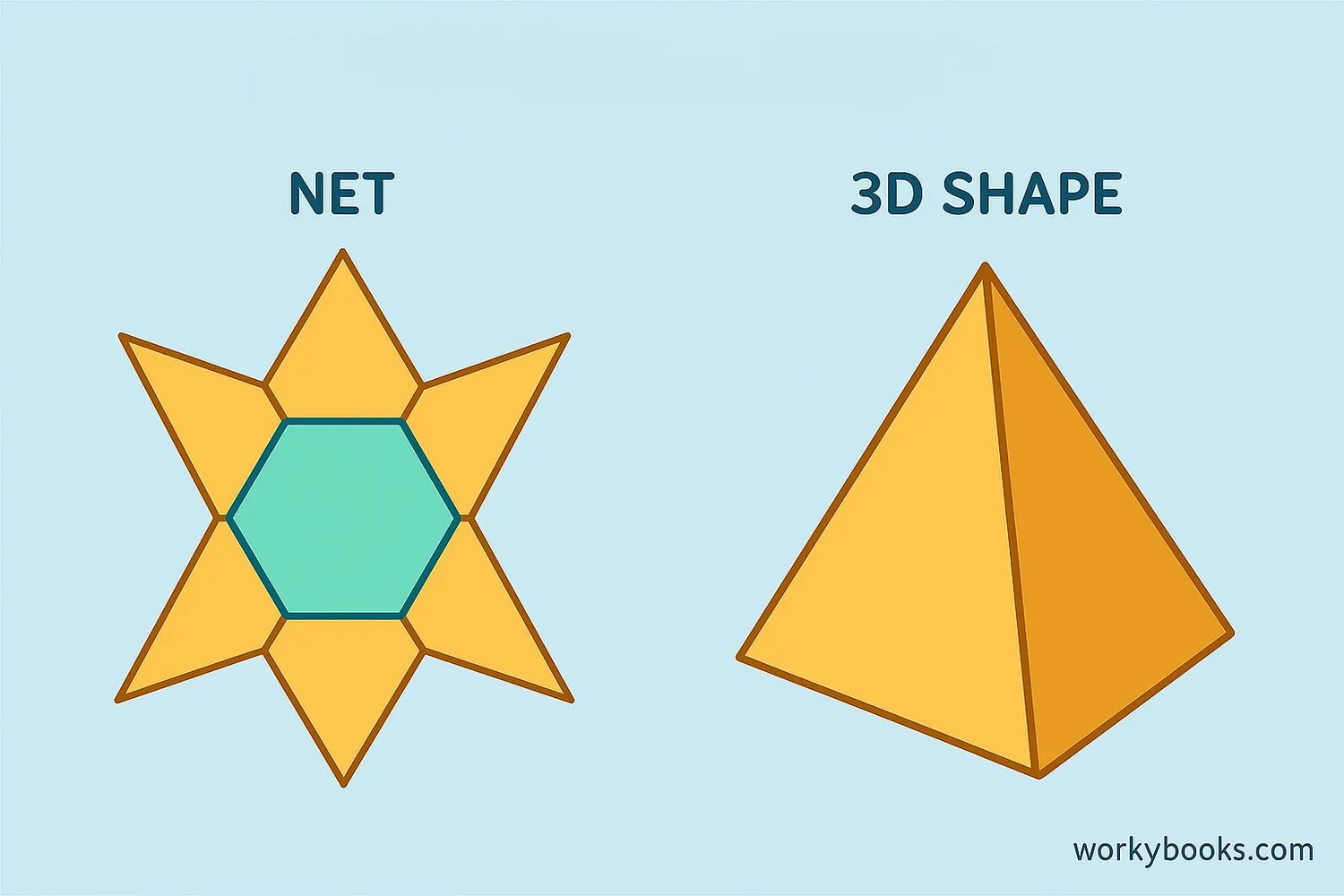
A net is a two-dimensional pattern that can be folded to form a three-dimensional shape. The net of a hexagonal pyramid shows us all its faces laid out flat.
The net consists of:
- One regular hexagon (the base)
- Six isosceles triangles (the lateral faces) attached to each side of the hexagon
When we fold the triangles upward along the edges of the hexagon, they meet at a point to form the apex of the pyramid.
Nets help us understand how 3D shapes are constructed and are useful for creating models of geometric shapes. You can trace a net on paper, cut it out, and fold it to make your own hexagonal pyramid!
Try This
Try drawing the net of a hexagonal pyramid yourself. Start with a hexagon, then attach a triangle to each side. Make sure all triangles are the same size!
Real-World Examples
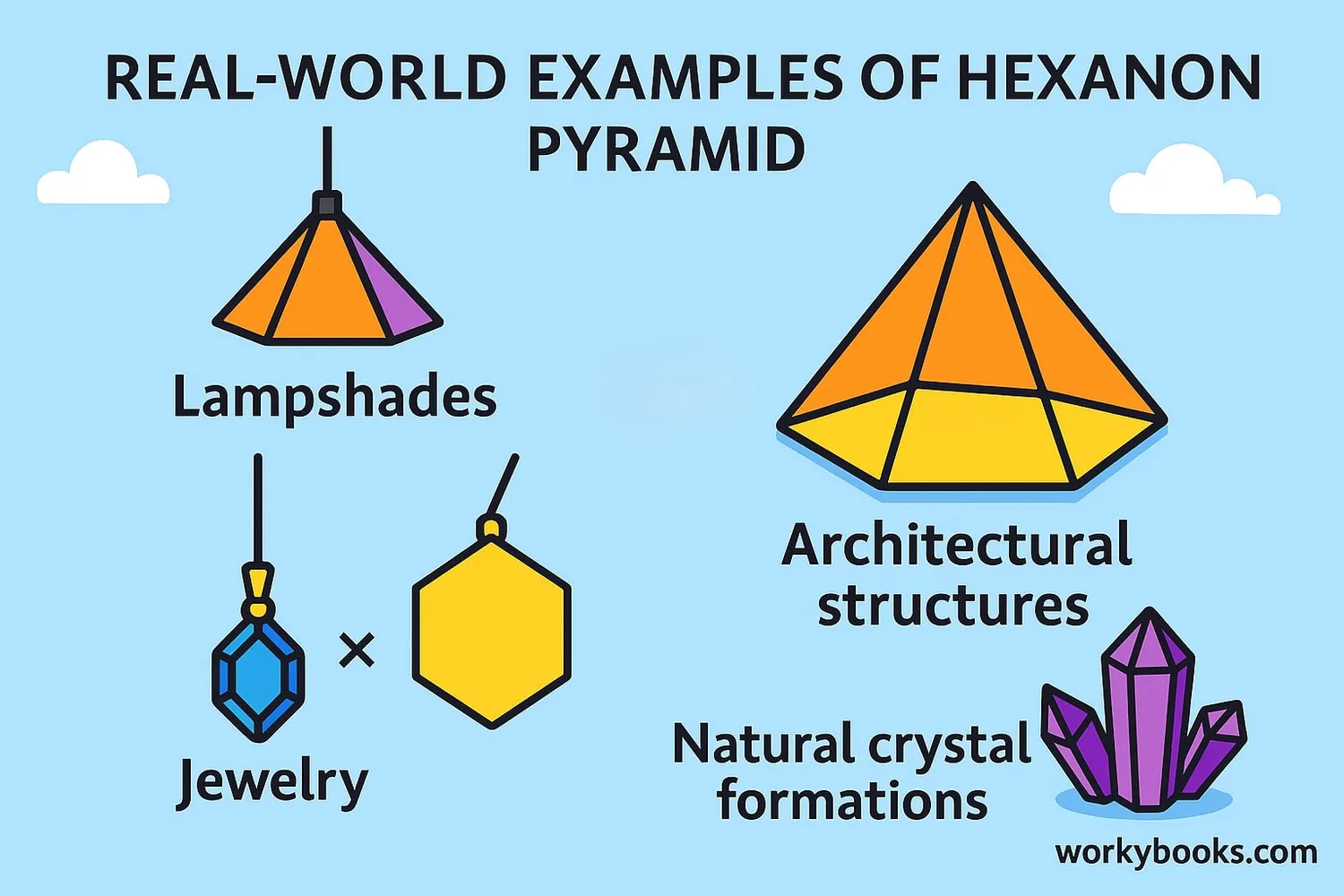
Hexagonal pyramids appear in many places in our world. Here are some examples:
Architecture: Some buildings and towers have hexagonal pyramid roofs or elements. The Louvre Pyramid in Paris has a square base, but some modern buildings use hexagonal pyramid designs.
Packaging: Some specialty boxes and containers are shaped like hexagonal pyramids, especially for luxury items.
Jewelry: Some gemstones are cut in hexagonal pyramid shapes to maximize their sparkle and beauty.
Toys and Games: Many board game pieces and educational toys use hexagonal pyramid shapes.
Nature: Some crystals and mineral formations naturally grow in hexagonal pyramid shapes due to their molecular structure.
Lighting: Certain types of lampshades, especially pendant lights, are designed as hexagonal pyramids to distribute light evenly.
Look Around
Can you find any hexagonal pyramid shapes in your home or school? Look at objects like decorative items, packaging, or building elements.
Hexagonal Pyramid Quiz
Test your knowledge about hexagonal pyramids with this 5-question quiz. Choose the correct answer for each question.
Frequently Asked Questions
Here are answers to common questions about hexagonal pyramids:
Geometry Trivia
Discover interesting facts about geometry and pyramids:
Ancient Geometry
The word "geometry" comes from the Greek words "geo" (earth) and "metron" (measurement). Ancient Egyptians used geometry to measure land after the Nile River flooded each year.
Euler's Formula
For any polyhedron (3D shape with flat faces), Euler's Formula states: Faces + Vertices - Edges = 2. For a hexagonal pyramid: 7 + 7 - 12 = 2. It works!
Natural Pyramids
While most natural pyramid-like formations have square or rectangular bases, some crystal formations in nature display hexagonal pyramid shapes due to their molecular structure.
Pyramid Power
The Great Pyramid of Giza in Egypt was the tallest human-made structure in the world for over 3,800 years! It has a square base, but shows how impressive pyramid structures can be.





